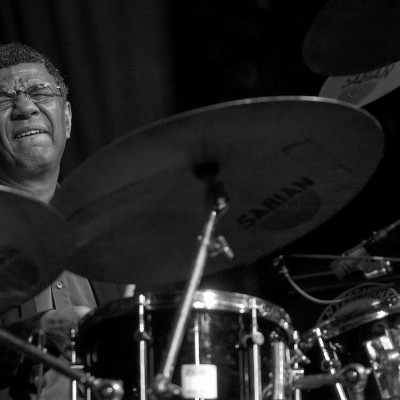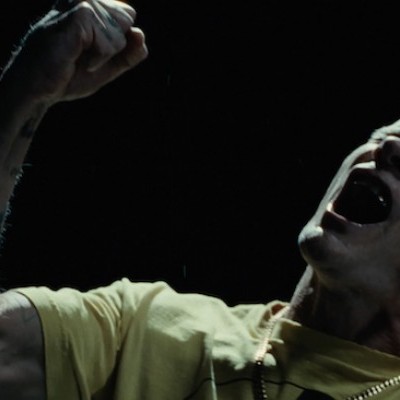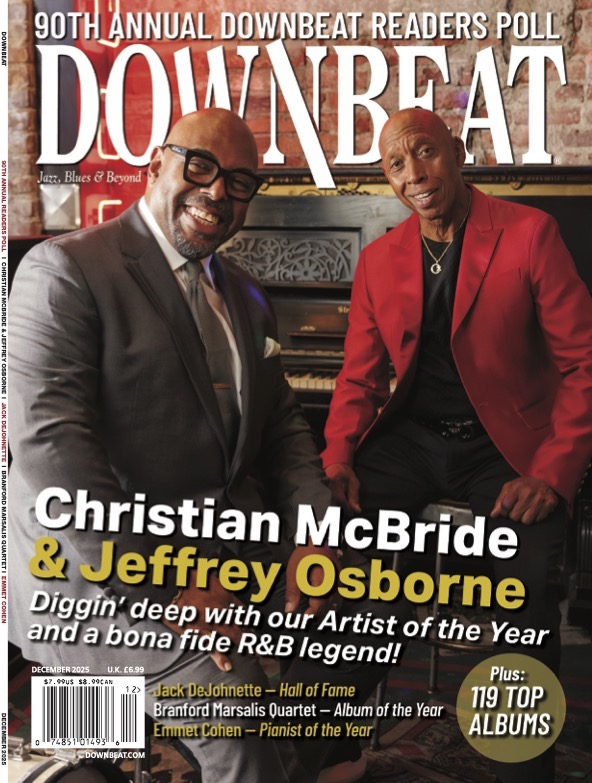Oct 28, 2025 10:47 AM
In Memoriam: Jack DeJohnette, 1942–2025
Jack DeJohnette, a bold and resourceful drummer and NEA Jazz Master who forged a unique vocabulary on the kit over his…

Tania Chen’s improvisatory skills perfectly prepare her to perform compositions by John Cage.
(Photo: Tom Djll)It would be hard to imagine a pianist better suited to record John Cage’s Electronic Music For Piano than Tania Chen. In addition to an impressive history of performing and recording Cage’s work, the London-based Chen also has released several albums of improvisational and electronic recordings, working with the likes of Henry Kaiser, Steve Beresford and Wadada Leo Smith. And why are improv chops important here? Because, as David Toop explains in the liner notes to John Cage: Electronic Music For Piano (Omnivore 262; 69:12 ****), although the piano score is fully notated, the composer’s instructions for the addition of electronics are “hurried,” “cryptic” and “vague.”
Fortunately, Chen brought in just the right crew for the project. In addition to Toop, the album also features John Leidecker, an electronic musician better known as Wobbly, and former Sonic Youth guitarist Thurston Moore. The music was recorded as three discrete duets with Chen, and mixed in what might be considered an avant-garde dub style, with tracks added and dropped from the mix, using a “chance-based system” that at one point inserts a three-minute silence. As described, the whole thing might seem more theoretical than musical, but Chen’s affinity for the Cageian aesthetic pulls unexpected beauty from its randomness. (omnivorerecordings.com)
Anyone who has followed David Byrne’s musings on politics and justice can be forgiven for wondering if the singer is putting us on by calling his new album American Utopia (Nonesuch 565710; 37:17 ***1/2). But even as he insists that the 10 tunes here are meant to “depict the world we live in now,” Byrne nonetheless brushes away suggestions of knowingness and irony. Instead, his goal is to affect an innocent view similar to that of “outsider artists,” like cover painter Purvis Young, a perspective that asks questions but also wonders, as one song does, “Must a question have an answer?”
Unfortunately, the approach occasionally is a stretch even for as practiced a faux naïf as Byrne. “Dog’s Mind” tries to defang the menace of fake news and presidential malfeasance by imagining it all through canine eyes, a bit of whimsy that wears thin by the time he sings of “doggie dancers doing doody.” Yet the music—a vast, panoramic soundscape of slow-moving synths—is so gorgeously evocative that it’s hard to begrudge Byrne his fantasy.
In addition to long-time collaborator Brian Eno, who among other things conjures a deliciously jittery post-modern Afrobeat groove for “It’s Not Dark Up Here,” Byrne works with XL Records mastermind Rodaidh McDonald and electronic musician Daniel Lopatin (better known as Oneohtrix Point Never). Between them, they provide enough texture and sonic variety to keep these songs interesting, even when the lyrical conceits start to grate. (nonesuch.com)
Dreams of an ideal nation apparently also underpin the songs on the new Sidi Touré album, Toubalbero (Thrill Jockey 442; 54:59 ***), but because he does his singing in a Malian tongue, it’s hard for an Anglophone listener to assess the relative eloquence of his sentiments. Still, if his lyrics are even half as graceful and evocative as the playing is, they’re bound to be genius. Touré works in the Songhaï tradition, just as Toumani Diabaté and Ali Farka Touré do, and his initial albums for Thrill Jockey reflected the acoustic, singer/songwriter side of that music. But it’s when he lets his band cut loose—particularly fuzztone guitarist Djadjé Traoré and n’goni virtuoso Ousmane “Papou” Dagnon—that the music truly sizzles. (thrilljockey.com) DB

Jack DeJohnette boasted a musical resume that was as long as it was fearsome.
Oct 28, 2025 10:47 AM
Jack DeJohnette, a bold and resourceful drummer and NEA Jazz Master who forged a unique vocabulary on the kit over his…

Goodwin was one of the most acclaimed, successful and influential jazz musicians of his generation.
Dec 9, 2025 12:28 PM
Gordon Goodwin, an award-winning saxophonist, pianist, bandleader, composer and arranger, died Dec. 8 in Los Angeles.…

Flea has returned to his first instrument — the trumpet — and assembled a dream band of jazz musicians to record a new album.
Dec 2, 2025 2:01 AM
After a nearly five-decade career as one of his generation’s defining rock bassists, Flea has returned to his first…

To see the complete list of nominations for the 2026 Grammy Awards, go to grammy.com.
Nov 11, 2025 12:35 PM
The nominations for the 2026 Grammy Awards are in, with plenty to smile about for the worlds of jazz, blues and beyond.…

Nov 13, 2025 10:00 AM
For results of DownBeat’s 90th Annual Readers Poll, complete with feature articles from our December 2025 issue,…







